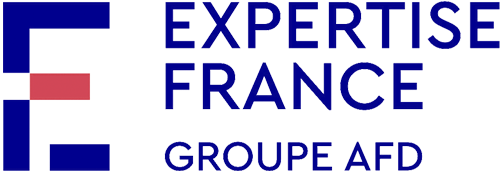OPP-ERA - Improving the follow-up of people living with HIV
Objective
-
€ 14,7mBUDGET
-
01/03/2013PROJECT START
-
70 monthsDURATION
The OPP-ERA project aims to strengthen access to the viral load test for HIV+ patients by promoting the use of Open Polyvalent Platforms (OPP). These tests, which measure the amount of the virus in the blood, are essential for monitoring the effectiveness of treatments on patients with HIV.
The OPP-ERA project is part of the "90x90X90" target set by UNAIDS, so that by 2020, 90% of all people living with HIV shall know their HIV status, 90% of people diagnosed with HIV shall be under HIV treatment and 90% of people treated shall have an undetectable viral load, proving that effective treatment is being maintained.
In 2016, the project was extended for 3 years to develop access to these tests on a larger scale and the polyvalence of platforms.

An innovative and appropriate technology
The OPP platforms offer significant advantages in terms of both use and costs, meaning it is an appropriate tool for countries with limited resources.
They are polyvalent and use an innovative open system of bio-molecular techniques that measures the HIV viral load, but also diagnoses other infectious diseases, such as tuberculosis and viral hepatitis.
The machines used are easy to handle, adapted to small laboratories and, as they reduce the volume of disposable plastic to be disposed of, can be used in health centres located both in capital cities and decentralised areas.
Opening up the market to competition to reduce the price of the viral load test
By promoting OPP platforms, the OPP-ERA project also aims to stimulate competition on the viral load test market. The objective is to help new manufacturers and technologies enter the market and ultimately to reduce the unit cost of tests.
Indeed, unlike “closed” systems, open platforms allow a combination of elements from different suppliers, making it possible to diversify the supply.
Chronology of the OPP-ERA project
Phase 1 (March 2013 – July 2016, USD 6.4m)
Phase 1 of the project introduced the viral load test for HIV+ patients on OPP platforms in 7 laboratories located in the 4 countries of operation. Over 220 clinicians and laboratory technicians were trained, respectively, in the prescription conditions and in how to carry out the viral load test.
A total of over 70,000 viral load tests were carried out in these 4 countries during phase 1 and over 75% of patients had an undetectable viral load.
During this first phase, the project was implemented by a consortium composed of Expertise France (leader and responsible for implementation in Côte d’Ivoire and Cameroon), Solthis (Guinea), Sidaction (Burundi) and ANRS (scientific leadership and promotion of results).
Phase 2 (August 2016 – July 2019, USD 14.7m)
OPP-ERA 2, the second phase of the project, aims to:
• Increase the number of viral load tests in the laboratories of phase 1,
• Install open polyvalent platform (OPP) equipment in 7 new laboratories,
• Demonstrate the polyvalence of the platforms,
• Promote the entry of new suppliers on the market.
This second phase is implemented by Solthis, the leader and responsible for implementation in Guinea; Expertise France, responsible for implementation in Côte d’Ivoire and Cameroon; Sidaction, responsible for implementation in Burundi; and ANRS, responsible for the scientific leadership and the promotion of the results.
Outcomes of the OPP-ERA project
2013-2019: THE PROJECT'S SUCCESSES

HIV viral load measurement is a key monitoring tool for people living with HIV/AIDS. A guide and toolkit have been produced to share the experience from six years of implementation in Burundi, Cameroon, Côte d’Ivoire and Guinea.
The Guide for the operationalisation of the viral load presents 60 lessons learnt from the experience of the OPP-ERA project, combined with implementation recommendations and tips, and advocates for a systemic approach to the viral load (including the strategy, the laboratory, supply, patient care and economics) to make sustainable access to the viral load and its actual use a reality for the greatest possible number of patients.
Download the HIV Viral Load Testing Operational Guide
The HIV-1 Viral Load Toolkit includes 90 practical tools for the implementation of the viral load, for laboratories (setting up, sample processing and analysis, biosecurity), supply (quantification, purchasing, transport, storage and maintenance), the collection of samples, data management, patient care and the national strategy.
Consult the toolkit (in French): toolkit-chargevirale-oppera.solthis.org
In Guinea
In Guinea, the OPP-ERA project has introduced free access to viral load tests in the Guinean public health system for the first time, by installing two molecular diagnostics laboratories at the National Institute of Public Health (INSP) and Donka National Hospital in Conakry. Since 2014, the OPP-ERA project has carried out over 26,000 viral load tests and 77% of the viral load has been suppressed on the sites supported in Guinea.
 Watch the webdocumentary about OPP-ERA in Guinea (in French): webdoc-chargevirale.solthis.org
Watch the webdocumentary about OPP-ERA in Guinea (in French): webdoc-chargevirale.solthis.org
In Côte d'Ivoire
In Côte d'Ivoire, the OPP-ERA project has contributed to extending access to HIV viral load tests at an affordable cost. It is reaching completion after 6 years of activity and has made significant progress:
• Awareness-raising among patients,
• Provision of the equipment required to measure the viral load in several referral laboratories,
• Increase in the number of sites to treat people living with HIV,
• Training of health professionals.
“Before the OPP-ERA project, there was virtually no coverage for viral load measurement tests in Côte d’Ivoire. According to the 2016-2020 National Strategic Plan of the National AIDS Programme, only 14% of people infected by HIV and under antiretroviral treatment benefited from a viral load test in 2014. Today, it is estimated that 66% of patients have benefited from this test”, explains Jean Claude Agaman, coordinator of the OPP-ERA project in Côte d’Ivoire.
The activities implemented by OPP-ERA will be continued by the Ivorian authorities, which have been a stakeholder in the project from the beginning.
Find out more: OPP-ERA in Côte d'Ivoire: Major strides
In Cameroon
In Cameroon, the OPP-ERA project has equipped four laboratories and trained the staff of these laboratories. A total of over 16 technicians and biologists have been trained, including 9 who have been authorised to carry out the viral load test on open polyvalent platforms (OPPs).
The laboratories supported by the project carried out 63,800 viral load tests on the open platforms between 2014 and 2018. The coverage of needs for HIV-1 viral load measurement rose from 22 to 62% between 2016 and 2019.
The activities implemented by OPP-ERA will be continued by the Cameroonian authorities, which have been stakeholders in the project from the beginning.
Find out more: OPP-ERA project: better access to HIV viral load measurement in Cameroon


